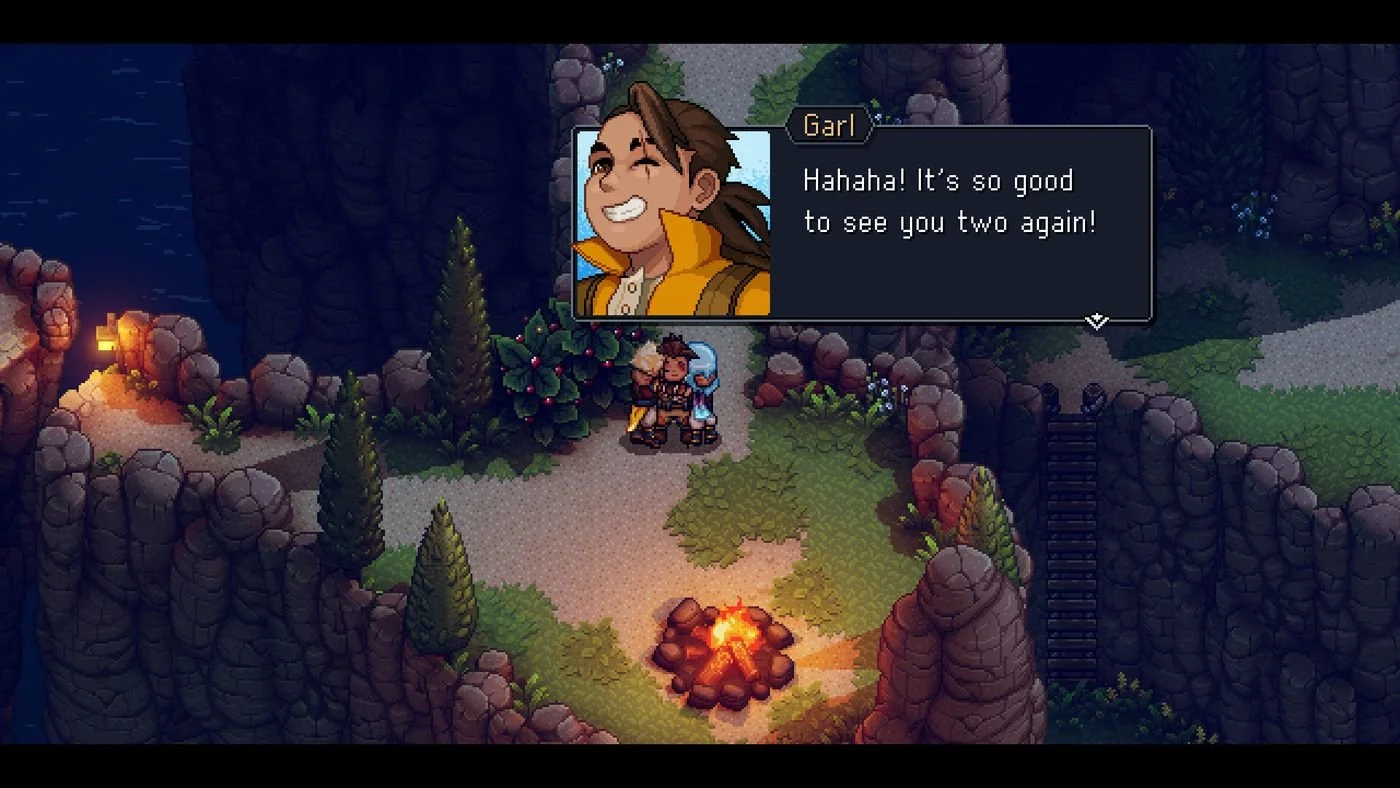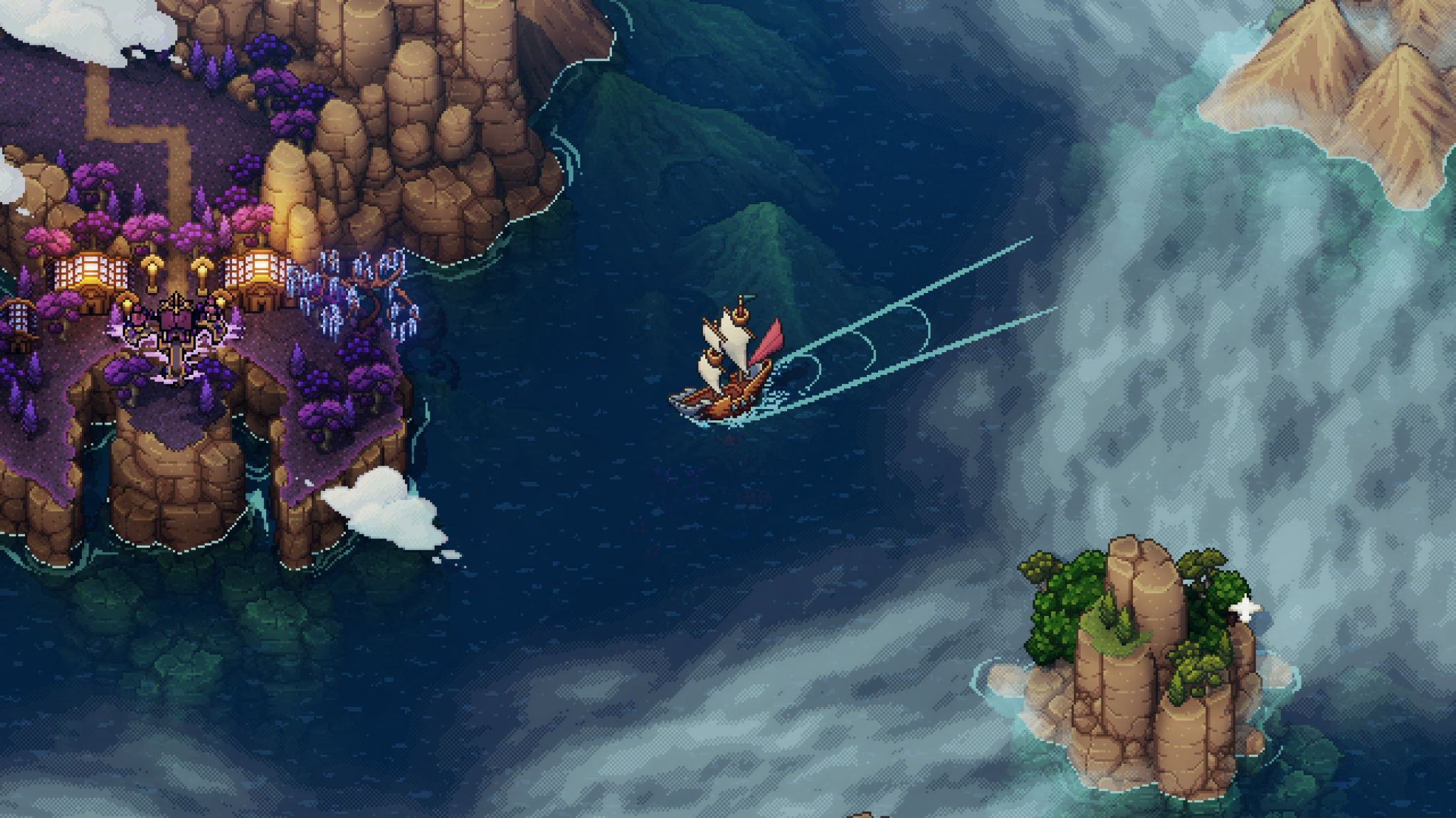Sea of Stars Review- The Retro JRPG of the Future
Sabotage Studios’ Sea of Stars had a lot to live up to. With its developers heralding as a return to SNES classics like Chrono Trigger whilst bringing the JRPG formula into the 21st Century, a lot could have gone wrong. From lacking the magic of older titles to a long, drawn-out story for the sake of it, developers can often find it difficult to hit the mark just right between loving homage and course-correcting mess. However, I’m glad to say that Sea of Stars manages to smash past all its barriers and has become one of my favorite RPGs of all time- confidently standing tall with the classics it was inspired by. From a stunning soundtrack to gripping characters and a surprisingly engaging combat system, everything comes together to create something special.
Image by Sabotage Studios
Story
If you’ve played Sabotage Studios’ other retro-inspired game, ‘The Messenger’, you’ll know that they have a pension for some well-written characters and a unique comedic style. Well, that has transferred over to Sea of Stars. Of course, compared to a Ninja Gaiden-inspired game, you’d expect to have a far more fleshed out narrative. This is certainly the case- introducing some fantastic cast members that each have their own quirks. From the loveable, huggable warrior-cook Garl to the teleporting ninja Seraii, each character has their time in the spotlight- and with six playable party members, none feel overshadowed or underutilised. They are all also deeply ingrained into the main plot of the game, which means their storylines are played out in the narrative at some point. While this does allow each character to feel important, it can lead to some disappointing gaps in the game’s side content, as the party members don’t offer much in the form of extra missions or interactions. However, by being so woven into the main story, this makes the overarching narrative very strong.
With a battle between the Solstice Warriors and huge demons across multiple worlds, Sea of Stars takes its solid premise and runs with it. Although some points in the story can feel contrived and drawn-out, most plot points are fantastically presented. From the start to the end, the narrative remained engaging and avoided getting overly confusing and convoluted as many JRPGs unfortunately do. In a bid to stop the Fleshmancer in a seemingly simple mission, main characters Valere and Zale get more than they bargained for with a classically high-stakes story that unfolds naturally as you play. This means you are eased into the world with typical fantasy tropes like a starting village and a big bad villain before being hit by the more complex themes that Sea of Stars manages to deliver- like duty, honour, and purpose. It may seem simple to begin with, but the story that this JRPG delivers is far more than skin-deep and could even see you tear up at some points I won’t spoil.
Image by Sabotage Studios
Gameplay
The gameplay JRPGs can often become stale and repetitive- especially considering their drawn-out runtimes. Not so with Sea of Stars, however. By consistently introducing new ideas and concepts into its deceptively simple combat system, the gameplay naturally unfolds and gives players more options rather than bombarding them with an overwhelming number of options at the start or remaining dry until the end. A great example of this is how the characters are drip fed into the party, and how their different combat styles differ from each other to make you really look forward to playing as them. For example, the teleporting assassin Seraii can attack with a dagger that increases in power depending on your timing with the increasingly tight button prompts. Adversely, Zale- the Solar Blade- has abilities that involve holding down buttons and letting go at just the right moment. What elevates this combat system is how the characters can interact with each other in combat thanks to combo-moves. This can see a huge solar bomb being thrown at a group of enemies or a combination of lunar magic and poison to inflict huge damage onto one enemy- which is especially useful during bosses. Thanks to these moves being hidden around the map, the combat system is complimented by the exploration and vice-versa, which creates an engaging and rewarding gameplay loop.
Speaking of exploration, that brings us to one of Sea of Stars’ greatest strengths. With the ability to scale walls, jump across ledges and swim through water, the environments offered are some of the most interactable I’ve seen in a JRPG- especially for one with a retro-art style. With secrets hidden around every corner, exploration is very much encouraged- especially when a lot of the rewards include more than just weapon and Armor upgrades. From quiz question packs that test your knowledge of the story to rainbow conches that you can trade in for new moves and attacks, there’s every reason to go off the beaten bath to search for treasure. For those who want to beeline the main story, however, this is one of the few JRPGs that eliminates the grind. With your party members receiving diminishing returns from slaying low level enemies as you grow in power, grinding is disincentivised more than ever- which allows every type of player to be in for a fair challenge with each major encounter. On top of this, the Chrono Trigger enemy encounter style of enemies appearing in real time on the map removes random encounters and gets rid of a lot of the frustration that many face when playing older SNES RPGs. Pair this with some pretty addictive mini-games, and Sea of Stars has some of the finest and most diverse gameplay of any JRPG I’ve seen for years- and it presents it all in a unique way that grips you from beginning to end.
Image by Sabotage Studios
Presentation
Its hard to discuss Sea of Stars without mentioning the fantastic art style. This is what drew a lot of players in with its initial trailers, and its something that certainly doesn’t disappoint. In fact, the different environments, and areas you traverse only get more mystical and beautiful as you get deeper into the game. There comes a point where you think the game has reached its creative peak before it smashes your expectations with one of the most inventive twists I’ve seen in a while. With such a typical classic presentation, you might expect Sea of Stars to play it safe and stick to what it knows will work- but that’s anything but the case. Prepared to be surprised in the latter half of this game- because it holds some of its best scenes hidden towards the end of the adventure.
Music is yet another aspect in which Sea of Stars excels. Sabotage Studios made itself known for its incredible 8-bit and 16-bit tunes with ‘The Messenger’, but their latest project dials it up to eleven. With an incredibly catchy battle song, relaxing tunes when exploring autumnal areas and, of course, some high-tension riffs when fighting those climactic bosses. The soundtrack certainly doesn’t disappoint, and with such a wide range of musical melodies here, I’m very excited to see what Sabotage has in store for future releases- as their musical chops appear to only be going up.
Image by Sabotage Studios
Sea of Stars achieves everything it wanted to and more. It delivers an epic story, lovable characters, and a truly engaging combat system to provide a near-perfect 30-hour package. Apart from some hiccups in certain story sections and the lack of some needed side content, Sabotage has created something that is more than the sum of its parts. Although this game set out to be an homage to past JRPGs, it actually makes me more excited about the future of the genre. If indie studios (and maybe even some AAAs) can continue pumping out fantastic pixel art RPGs like Undertale, Chained Echoes and now, Sea of Stars, it makes me very excited for what we might see in the coming years.




